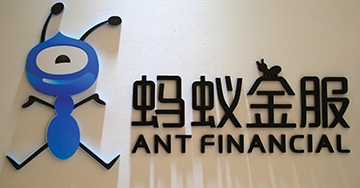Pakistan gets full marks for commitment to the idea of financial inclusion but, with formal banking access limited to 23% of the adult population, it has some way to go in practice. An investment by the world’s most valuable fintech could speed things up, however.
March 2018 brought news that Ant Financial Services, a spin-off of Chinese e-commerce giant Alibaba, is to form a strategic partnership with Pakistan’s Telenor Microfinance Bank (TMB). The Chinese firm will pay $184.5m for a 45% stake in TMB, until now a wholly owned subsidiary of Norwegian telco Telenor.
The investment is significant for TMB and for its broader market, since the hugely successful Ant will help the bank to develop its mobile payment and digital financial services. “They are world class, with the kind of experience that has taken Ant and [its payment system] Alipay from nothing to become the largest payments company in the world,” says TMB chief executive Shahid Mustafa. “We can learn from them. This is still largely a cash market, ideally suited for a revolution, and TMB is poised to be at the forefront of it.”
Cash out?
In Pakistan, cash is an inefficient and unsafe payment option, according to Mr Mustafa. “We will provide more access to electronic banking services,” he says. Using a mobile phone app, Alipay customers can scan a QR code to pay for goods and services from money deposited in their Alipay account.
The service really started to take off in China when it offered higher interest rates than banks, alongside discounts and rewards for shopping via the app. These marketing tactics are now heading for Pakistan. “Once the deal has closed, we will focus on market share acquisition, not the bottom line, as Ant does around the world,” says Mr Mustafa.
TMB leads the branchless banking market in Pakistan by active account numbers – with 45% of the market, according to the State Bank of Pakistan (SBP) – and transaction values (44%). It is followed by Mobilink’s JazzCash (44% and 35%, respectively) and UBL’s Omni (9% and 13%). Measured by deposits, however, Mobilink is way ahead with a 56% share. This is something that TMB, with 21% of deposits (UBL 18%), will be targeting.
Branchless banking has grown in fits and starts in Pakistan. However, so-called mobile wallet transactions in the quarter to September 2017 (the latest available SBP figures) totalled Rs246.4bn ($2.04bn), 145% higher than a year earlier.
Microfinance lending in the country has been growing too, if not at quite the same rate. At the end of 2017, the gross microcredit loan portfolio stood at Rs202.7bn, having grown 48% over the year. The number of active borrowers was up by 27% to 5.8 million, while savers increased by 29% to 31 million. Back in 2012, the gross loan book was a mere Rs33m, spread among 2 million borrowers.
The average loan size also continues to grow. At the end of 2017, it was Rs48,695, 17% more than the year before. The market leader in microfinance is Khushhali Bank, in which UBL holds a 30% stake, with a total loan portfolio of Rs32.5bn. TMB is in second place with Rs25bn.
From micro to small
One problem that exists in Pakistan is how the industry treats micro borrowers that have moved from ‘micro’ to ‘small’ on the micro, small and medium-sized enterprise (MSME) spectrum.
Pakistani banking has not served small and medium-sized enterprises (SMEs) well. Their share of bank assets has dwindled from 17% in 2008 to less than 9% today, and the SBP now has SMEs on its list of urgent things to do.
“If the government could find a way to get funds to them, the sector would explode,” says Zubyr Soomro, a SBP board member and former chairman of Pakistan Microfinance Investment Company, which delivers funding for microfinance lenders. While the SBP is trying to facilitate this from above, Mr Soomro thinks that a bottom-up approach makes sense.
While microfinance is structured around a social model, micro lenders should also learn how to do small business loans, he says. “The banking system should realise that the 'S' part of MSME should be with microfinance banks,” says Mr Soomro. “The 'M' then goes to commercial banks.”
There are ways for micro lenders to get around small businesses’ lack of collateral and information quality, he argues, some involving leasing or factoring. TMB is already venturing into this part of the market and accepts gold jewellery as collateral.












